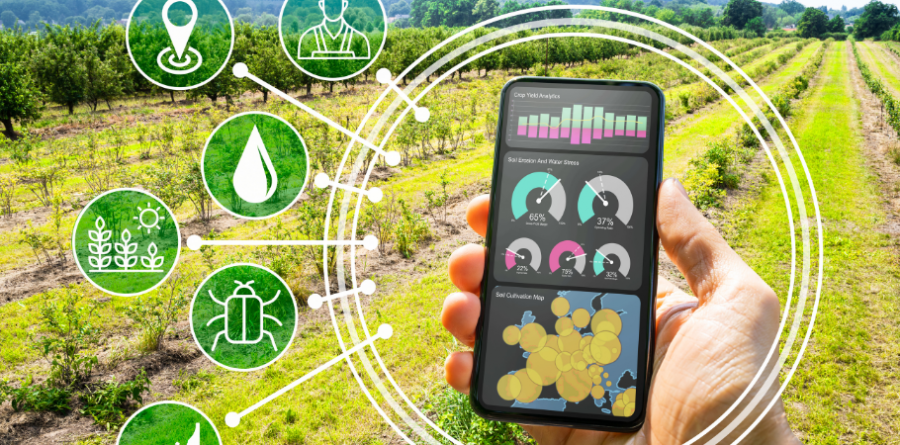
Green transition is a trend and millennium goal of the whole world. This is also one of the solutions aimed globally to minimize human impact on the environment. This activity includes many items such as green energy transition, green industry, sustainable energy and circular economy. Besides, green transition in businesses is also a very important issue.
However, many businesses today still do not really understand what green transition is like in their businesses. In our blog, let’s explore some benefits and how to implement the green transition in businesses.
What is Green Transition?
Green transition is the process of building an economy in which emissions are from low to very low, achieved through civilized development, economical and efficient use of natural resources. Green transition aims to reduce ecosystem degradation and adverse impacts on the environment by humans.
A green economy will be associated with factories and enterprises with less smoke and dust. The energy source used is clean and renewable, environmentally friendly. For example, production and business activities do not pollute the environment. Agricultural activities such as cultivation and animal husbandry do not use toxic substances that pollute the environment and human health.

Benefits of Green Transition in Businesses
It is not natural that green transition has become a trend of the whole world. This process actually brings many benefits to businesses, such as:
1. Increase Market Share – Revenue – Competitive Advantage
As many as 66% of global consumers say they will pay more for products and services for environmentally responsible businesses. It is also easy to notice that many products with a tendency to be “Organic” or less harmful to the environment are also appearing more and more and are gradually preferred by customers over traditional products.
The green transition in businesses also helps them improve their competitiveness in the market. Besides, it helps increase market share, revenue and the ability to retain customers and partners.
2. Positive Impact on the Brand
The development of green products is also a “golden” opportunity for businesses to enhance brand identity. Especially when customers are increasingly appreciating and favoring businesses with a strong commitment to environmental and social protection.
3. Receive Support Policies from the Government
Today, the government and international organizations regularly offer many incentives and incentives for businesses when they start implementing green transition. This not only creates convenience but also promotes innovation and prospects in research and production of green products for society.
4. Attracting Investors
The potential of green products is huge, and the market is also increasingly accepting and evaluating green product and service groups. This opens up huge financial opportunities for many businesses. Businesses can demonstrate a commitment to the sustainability of the green transition. Thus, they can easily attract investment, get financial support from international organizations.

Is Green Transition in Businesses Possible?
Today, green transition in businesses is not only feasible but also mandatory. This is not only a matter of one person or organization but a whole collective, from many businesses joining hands. The government is also providing a lot of support for businesses that are tending to green activities.
According to experts, there are 5 aspects that every business needs to take into account for sustainable green growth with green transition, including:
- Control and reduce energy and material consumption
- Optimize operations
- Use recyclable materials
- Applying technology to optimize resources
- Waste control and treatment
Methods to Implement Green Transition in Businesses
There are many feasible green transition methods that businesses can apply, such as:
1. Optimize Energy Efficiency
The main method of optimizing energy efficiency is using green energy sources – renewable energy to replace fossil energy. To achieve this, businesses can apply new digital technologies to optimize the process of generating renewable energy sources. Moreover, it is also important to control the current energy system.
2. Management of Resource Use and Waste
The larger the business, the more waste is discharged, the more difficult it will be to save fuel. However, it is completely easy for businesses to manage and use resources and waste with the new technology management system.
The most typical of this new transformation method is a smart water management system that helps reduce water waste. Or sensor technology to reduce waste production is applied by many textile and food manufacturing enterprises.
With sensor technology, businesses can easily monitor the amount of waste and notify management about collection. Thus they can reduce pollution and avoid wasting resources. This method also helps to limit excessive garbage collection when it is not necessary.
3. Energy Management System Integration
The management of energy and resource consumption data can have a major impact on the entire economy and society. However, if done intelligently, it is possible to collect and analyze data automatically.
The system will collect and analyze data, which is the basis for optimizing the use of energy and resources. In the long run, they contribute to reducing energy security risks and reducing corporate emissions to the external environment.

4. Creating a Standard Energy Data Model
The standard energy data model helps to measure and improve energy efficiency significantly, especially in production and business.
For example, through the process of monitoring and evaluating the energy of an automobile manufacturing company, it was found that the unit had 40% of the energy consumed even if it did not produce anything. As a result, businesses can detect and disconnect this wasteful energy source, reducing costs and emissions.
5. Data Mining and Analysis
Exploiting and analyzing data from various sources in production helps businesses understand the impact of humans on the environment. From there, the unit creates more sustainable solutions.
In addition, data analysis also contributes to suggesting performance improvements, reducing energy to promote green transition. This process also makes predictions, updating energy consumption in real time.
In conclusion, green transition in businesses is essential for sustainability and long-term growth. It minimizes environmental impact, enhances brand reputation, and reduces operational costs. Implementing green transition involves adopting renewable energy, promoting circular economy practices, and fostering innovation. Businesses that embrace this shift can lead in a competitive, eco-conscious market. Prioritizing green transition in businesses ensures a future-proof, environmentally responsible strategy.
See more: What is Green Transition? Simple Steps to a Better World


